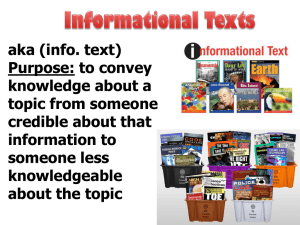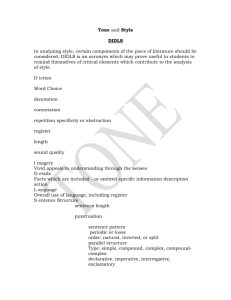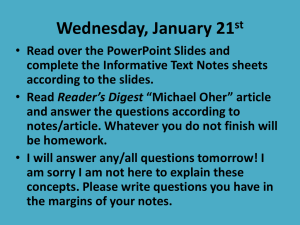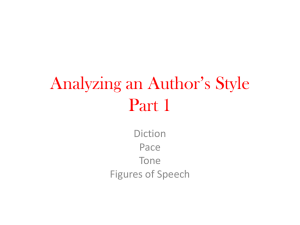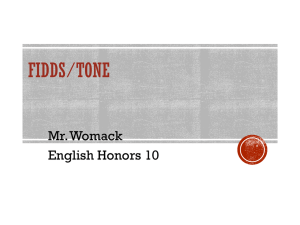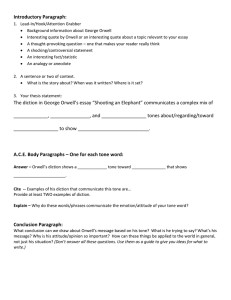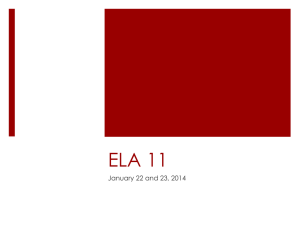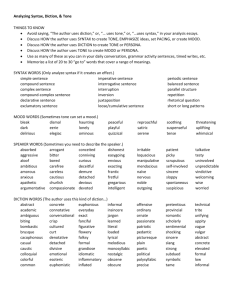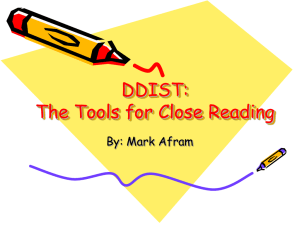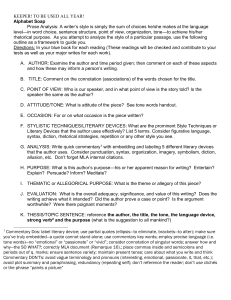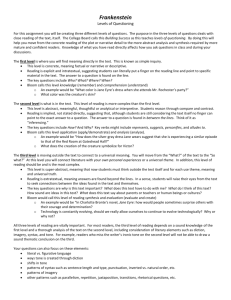Tone Approach Slides
advertisement
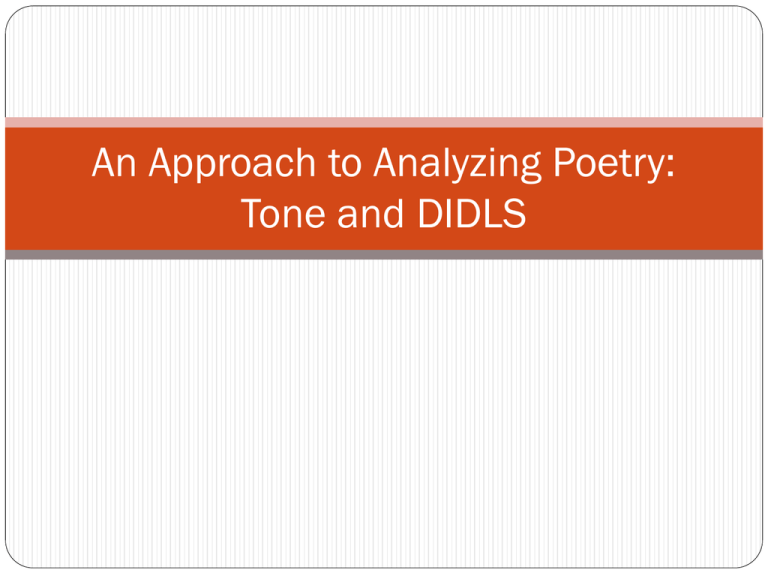
An Approach to Analyzing Poetry: Tone and DIDLS DIDLS: The Key to TONE TONE= writer’s or speaker’s attitude toward the subject and the audience. While it sometimes difficult to comprehend, to misinterpret tone is to misinterpret meaning! We will practice analyzing the Diction Images Details Language and Structure in order to determine tone in poetry Diction Consider what words the poet DID choose to use What other words could have been used? What other words would NOT work in place of the word used? For example: Laugh: guffaw, chuckle, giggle, cackle, snicker, roar, chortle Old: mature, experienced, antique, relic, ancient Self-confident: proud, egotistical, stuck-up, haughty, smug Images Vivid appeals to enhance our understanding through the use of the senses What does the poet focus on in a sensory way? What images does he/she include? What images does he/ she LEAVE OUT? NOTE: Images differ from details in the degree to which they appeal to the senses Details Facts that are included OR those that are omitted The speaker’s perspective shapes what details are given and which are not, What do the details imply? What is the connotation of the details included? NOTE: Details are small facts; they differ from images in that they don’t have a strong sensory appeal. Language The OVERALL use of language: formal, clinical, colloquial, slang, etc. Consider language to be the entire body of words used in a text, not simply isolated bits of diction. What is the overall impression of the language? Does it reflect education? Is it plain? Ornate? Figurative? Structure How a sentence is constructed affects what the audience understands. Are the sentences: Choppy? Flowing? Filled with use of caesura? Chiasmus? Parallel construction? What emotional impression do they leave? Consider: Parallel structure: connects ideas, feelings, emotions Short: punchy, intense, passionate or flippant Long: distracting, reflective, abstract, depth of thought Loose: main idea at beginning; periodic: point at the end Inverted order: creates a questioning or a tension TONE SHIFTS Key Words: But, yet, nevertheless, although Punctuation New stanzas Sharp changes in diction Varying lengths of lines DIDLS Create and complete a chart for this poem: Lines/ TONE My Papa’s Waltz Diction Images Details Language Structure
